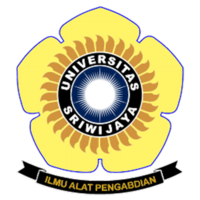Peningkatan Pertumbuhan Bibit Kelapa Sawit di Media Tanah Bekas Tambang Batu Bara melalui Aplikasi Pupuk Hayati
Abstract
Yanti, P. Y., Siaga, E., Meihana, M., & Neksidin, N. (2024). Improving the growth of oil palm seedlings in coal mine ex-soil media through the application of biofertilizers. In: Herlinda S et al. (Eds.), Prosiding Seminar Nasional Lahan Suboptimal ke-12 Tahun 2024, Palembang 21 Oktober 2024. (pp. 659–666). Palembang: Penerbit & Percetakan Universitas Sriwijaya (UNSRI).
Oil palm (Elaeis guineensis Jacq.) is one of Indonesia's leading plantation commodities. The current extensification efforts of oil palm plantations are positively correlated with the increasing need for quality oil palm seedlings. The most important management practice related to the seedling process is optimal fertilization. This study aimed to determine the growth response of oil palm seedlings in ex-coal mine soil media through the application of biological fertilizers. The research was conducted in Bingin Teluk Village Road, Rawas Ilir District, North Musi Rawas Regency, South Sumatra Province in February-May 2024. This research was conducted using a one-factor randomized group design (RAL) with 4 levels of biofertilizer treatment consisting of control / no treatment (P0), Trichoderma 15g /plant fertilizer (P1), Gliocladium 15g/plant fertilizer (P2), and Mikoriza 15g/plant fertilizer (P3). The results showed that the biofertilizer treatment gave significantly higher results in plant height, number of leaves and leaf area of oil palm seedlings compared to those without biofertilizer treatment. Gliocaldium fertilizer 10g/plant gave the best results on the growth of oil palm seedlings in ex-coal mine soil compared to Tricoderma and Mycorrhiza fertilizer.
Keywords
Full Text:
PDFArticle Metrics
Abstract view : 98 timesPDF - 122 times
Refbacks
- There are currently no refbacks.

